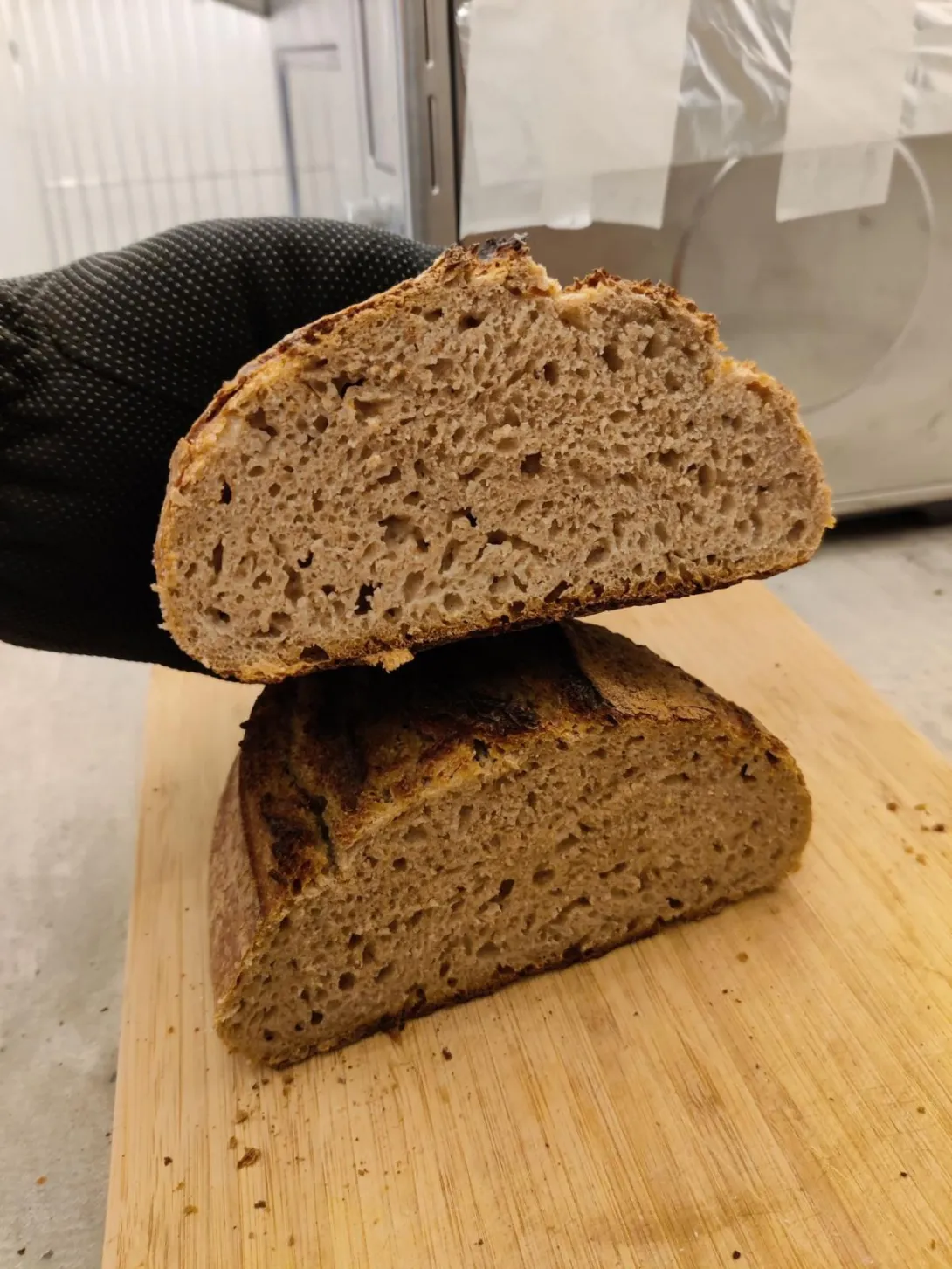
Hello everyone,
So I'm new to the sourdough world and been having some troubles with my first tries. I am using a homemade sourdough starter that is about 3 weeks old, with a morning and a night feeding the day before baking.
This is my 4th try at making a loaf, with 80% T80 Flour (11% protein), 20% Whole Wheat Flour, 68-70% Hydration, 20% Starter and 2% Salt.
This was my dough, from the overnight cold proofing and scored: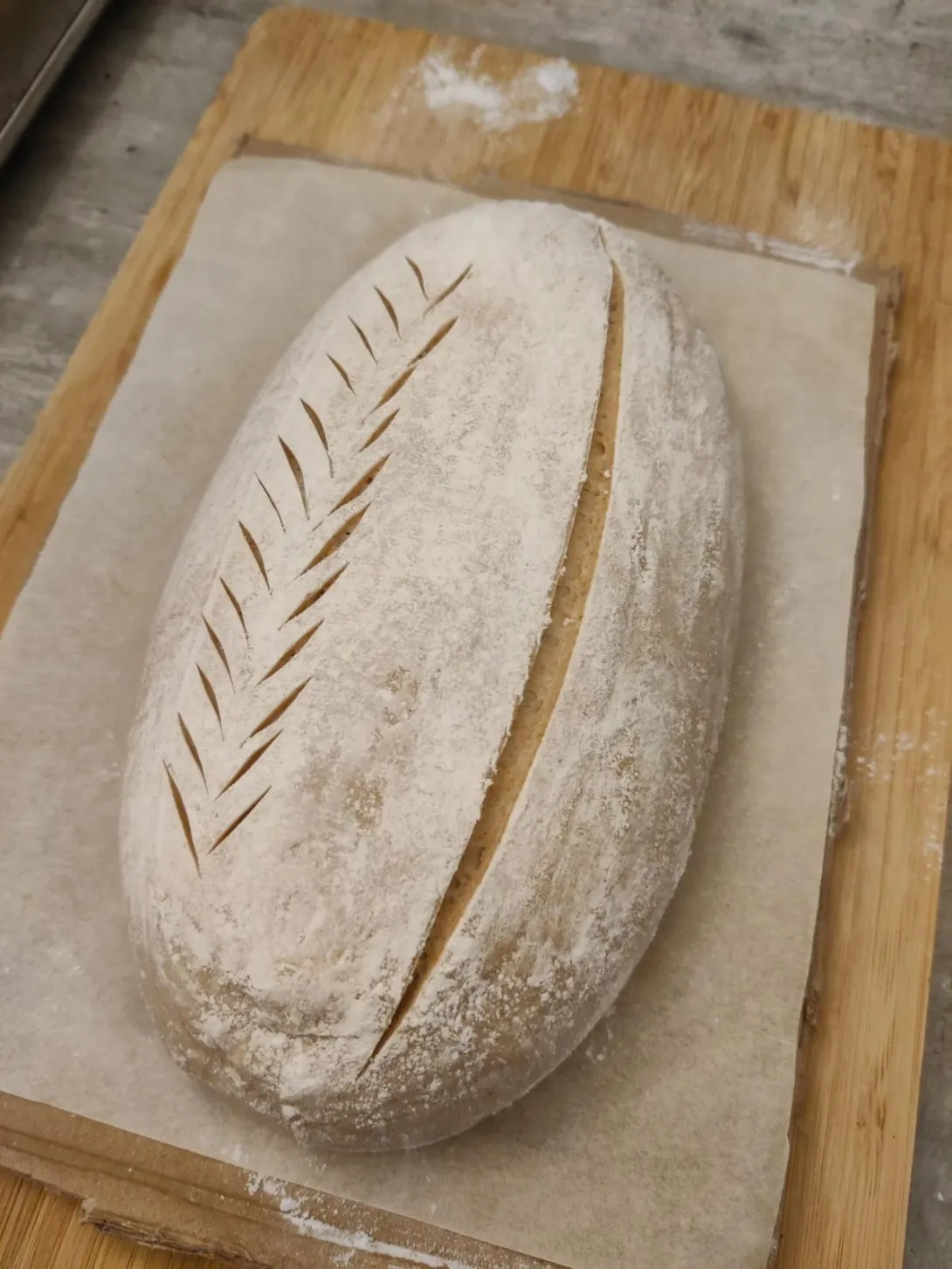
I baked it in a preheated oven, with a baking steel, at 230°C (with steam by pouring boiling water over the hot clay tray):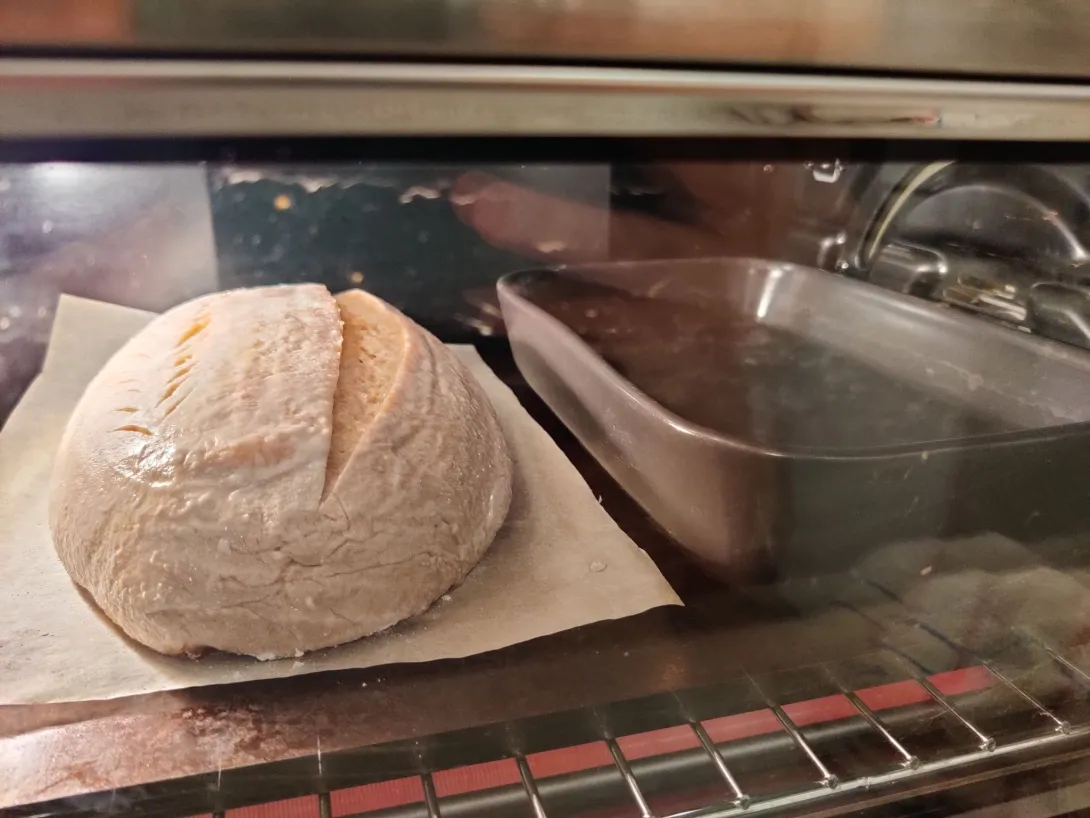
It got a decent oven spring during the initial bake time with steam, then gave it color without steam later on. And, this was the result: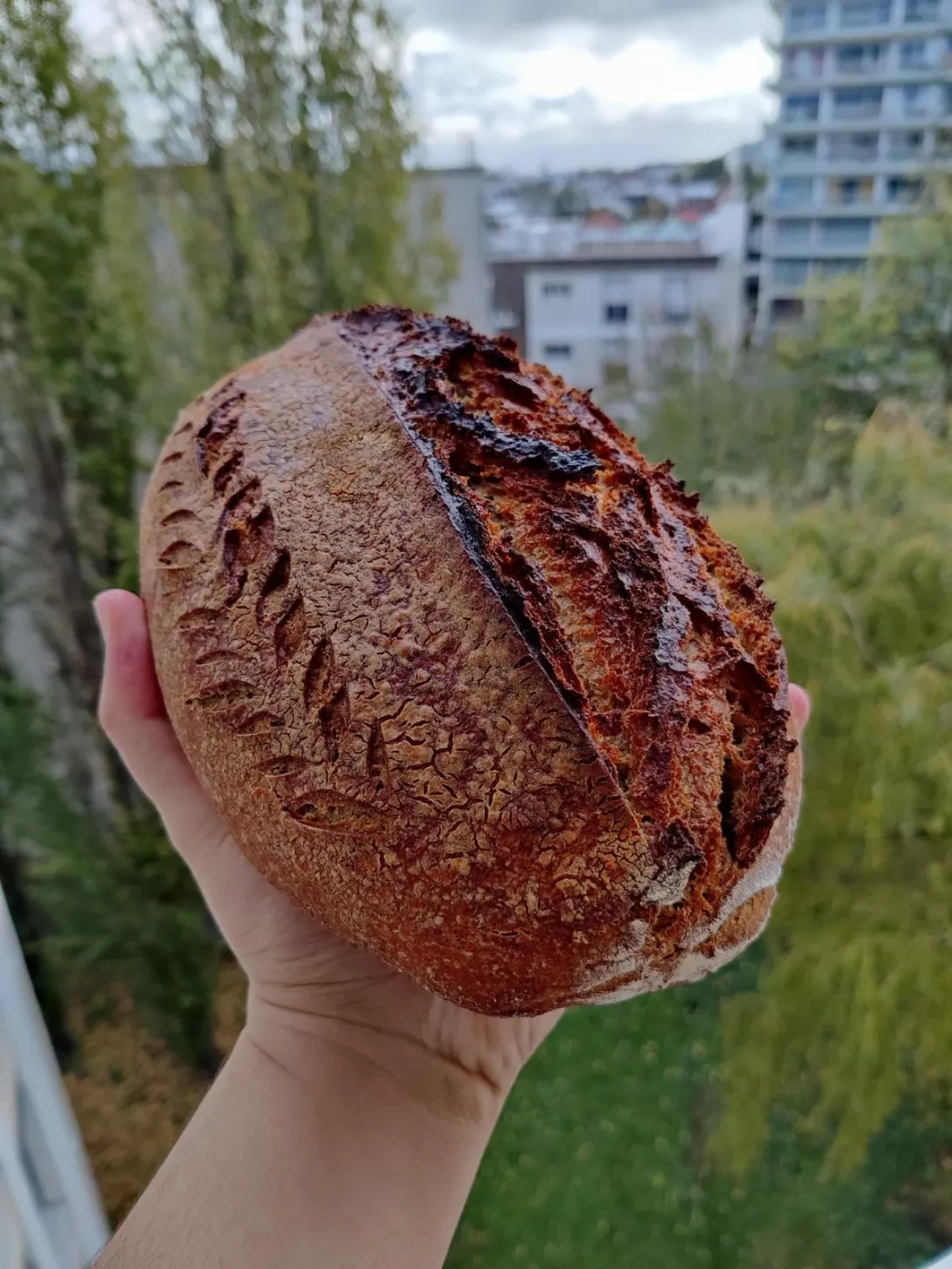
I let it rest for couple of hours. However, after cutting it, I found out that the crumb had this texture, dense and what felt like chewy and dense: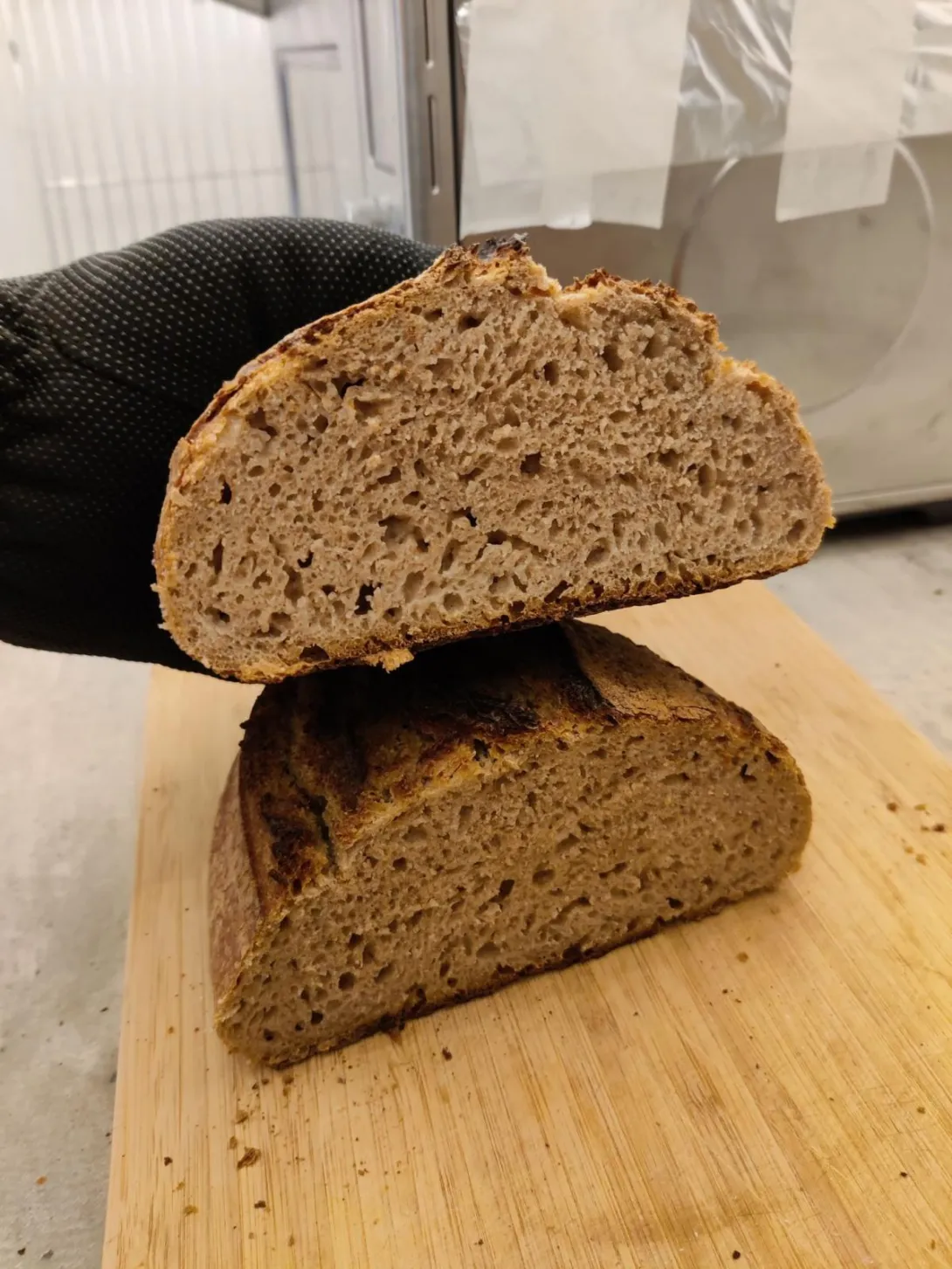
I would very much like to have feedbacks/informations on what could have possibly been the reason for so.
Thank you in advance.
All the more so, considering that you have such a youthful starter.
You don't mention the hydration of the starter itself. If it is, say, 100% hydration, that means it contributes another 10% to the overall final dough hydration, pushing it closer to 78-80% hydration. That isn't a problem, necessarily, and might actually benefit the bran contributed by your flours. Still, it will make the finished bread moister and heavier than nominal hydration might suggest.
From looking at the crumb, it may have wanted some additional time in bulk proof, prior to shaping and retarding. I wouldn't expect a wild, lacy crumb, given the flours used. Also, sourdough yeasts are much more sensitive to cold temperatures than commercial yeasts, meaning they have a much slower growth rate when refrigerated. All of which tilts toward getting the dough as billowy and gassy as is practical before shaping and retarding. It won't make up a shortfall in the refrigerator.
Again, you have a lovely loaf of bread. Your focus now is on fine-tuning your process as your starter becomes more mature, rather than making wholesale changes.
Paul
Thank you for your reply, sir.
For my starter, I took around 20g of it and fed it 100g of flour and 100g of water for the first feeding, and did the same with the second feeding.
And yes, I had a feeling it might be a bulk fermentation issue. It is cold where I live at the moment (11°C or 52°F). Since I don't have a proofing chamber, I tried to turn the room's heater on and put a bowl of hot water inside my mini oven where I bulk fermented the dough (rewarming that water whenever it cooled down). But, even after nearly 12 hours, I'm guessing the bulk fermentation never took place properly.